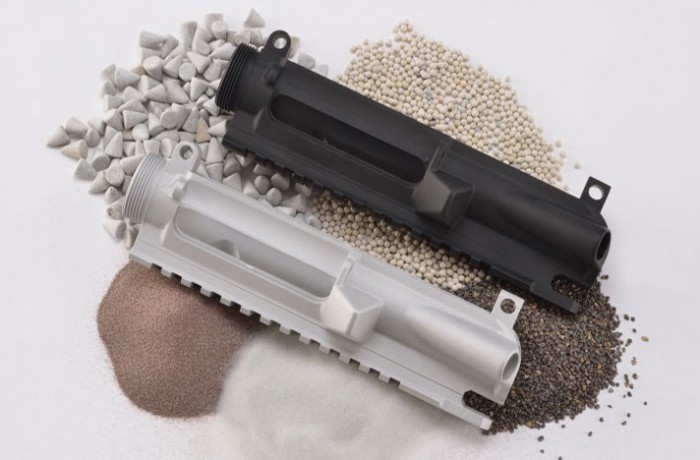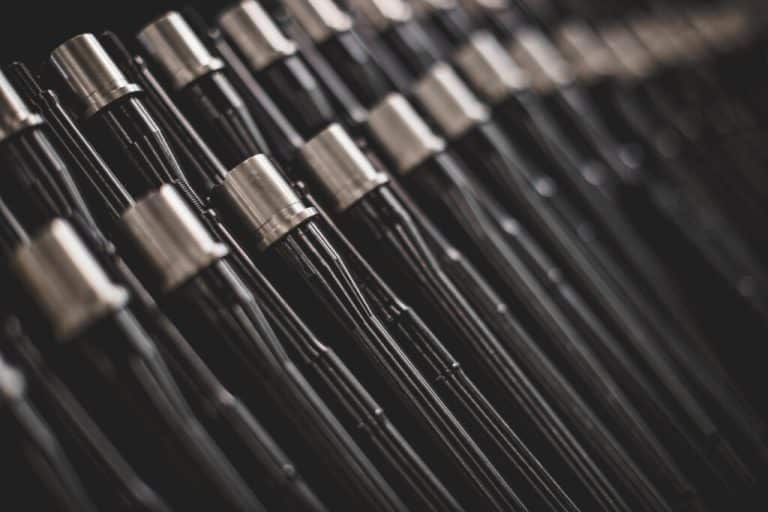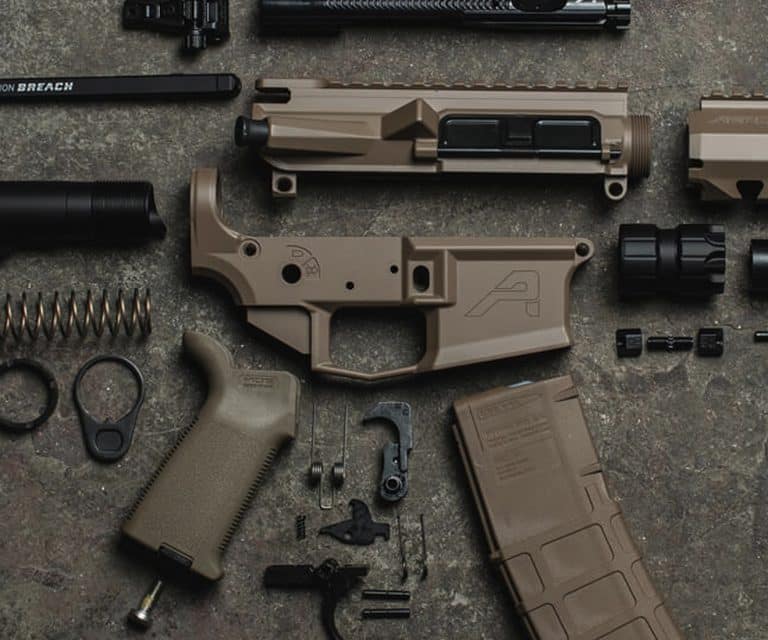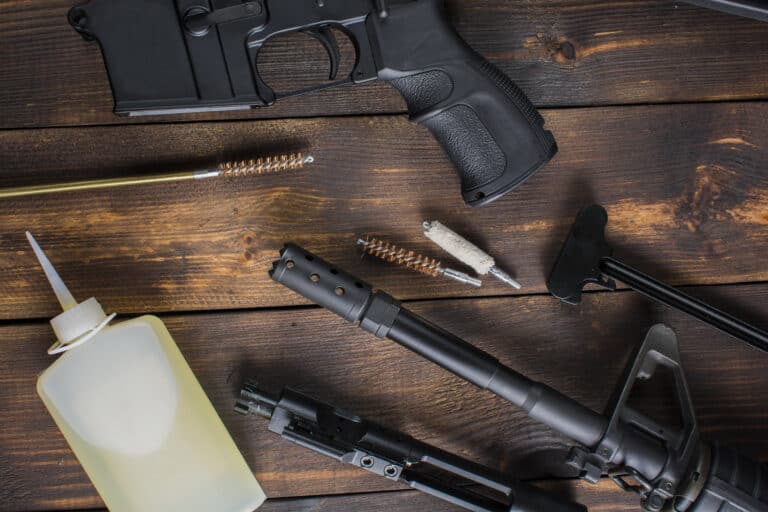What is Type III Hardcoat Anodize? Why AR-15 Owners Should Care
Have you ever wondered why the AR-15, one of the most popular firearms in the United States, has a unique and resilient finish?
The secret lies in a process known as Type III Hardcoat Anodize. You’ll often see this noted in the key features section of parts like lowers and handguards.
But what exactly is this, and why is it so important for the AR-15?
Let’s delve into the world of gun coating to answer these questions.
What is Hardcoat Anodizing?
Hardcoat Anodizing, or simply known as Hard Anodizing, is a technical process that creates a dense layer of aluminum oxide by transforming the surface of a suitably prepared and deoxidized aluminum alloy component into an oxide film.
This process involves a special electrolyte, usually sulfuric acid cooled almost to the point of freezing, with applied voltages exceeding 100 volts at an applied current density of between 24 and 36 amps per square foot.
It’s a pretty unique process, but it has a significant impact on metal surfaces, as we’ll see shortly.
Differences in Anodizing Types
Anodizing can be classified into three types.
- Type I refers to chromic acid anodize (or chromic alternatives), which is very thin and measures around 0.0001” thick.
- Type II signifies the conventional sulfuric acid anodize. It can be decoratively dyed in any color, resulting in a thickness of 0.0002 – 0.0006”.
- Lastly, Type III, or Hardcoat Anodize, is prepared under precise process conditions. It is harder, denser, thicker, and more resistant to abrasion than the other two types. The thickness of Hardcoat Anodize can vary from 0.0005 to 0.0030” and beyond, depending on the specific alloy being anodized.

Photo Credit: PFI
You’ll pretty much never see Type I used on AR-15 parts. Type II is common, but it’s mainly for decoration, and is mostly done by lower/mid-tier manufacturers.
The best products, in terms of quality, will use Type III because it adds a significant layer of protection and corrosion resistance.
Characteristics of Hardcoat Anodize
Hardcoat Anodizing imbues the aluminum with several remarkable attributes:
- Enhanced abrasion resistance, especially when unsealed
- Superior wear resistance
- Increased corrosion resistance, particularly when sealed
- Improved aesthetics
- Dielectric properties, meaning the coating acts as an electrical insulator
- Enhanced lubrication, specifically when PTFE sealed
- Sterilizable and non-contaminating, making it suitable for medical instruments
Basically, it makes an AR-15 part look clean and smooth, while adding a protective layer against abrasion or corrosion.
Appearance of Hardcoat Anodizing
The color transformation in the aluminum due to Hardcoat Anodizing is dependent on the specific alloy and the thickness of the anodic film.

Photo Credit: Lindgren Group
Many 6xxx-series aluminum alloys take on a deep gray-black color, while most 7xxx and 2xxx series appear more of a bronze-gray color.
When dye is used, black is the most common choice and provides a uniform and pleasing appearance. For other colors, testing is advisable due to the potential impact on the uniformity and decorative appeal.
Essentially, this is why most AR-15 parts have that dark, black color.
Effect of Hardcoat Anodizing on Part Dimensions
Anodizing is a conversion coating. It implies that a part of the raw aluminum surface is converted into aluminum oxide.
Typically, for Type III anodizing, half of the coating thickness penetrates into the surface of the parts, while the other half builds up on the surface. For a typical 0.002″ thickness requirement, this results in a 0.001″ dimensional change per surface.
Masking for Hardcoat Anodizing
All three types of anodic coatings are electrical insulators. Therefore, if an electrical grounding surface is required or if close dimensional tolerances need to be maintained, surfaces can be easily masked to remain free of anodize.
This can be achieved through various techniques such as the use of rubber plugs, precision die-cut custom decals, 3D printed silicone stop-offs, or painted-on lacquer applied manually or by CNC-programmed robots.
Sealing in Hardcoat Anodizing
Generally, Hardcoat Anodizing is left unsealed when applied for wear or abrasion resistance. This is the default setting in most specifications.
However, if the primary purpose is corrosion resistance or a combination of corrosion and wear resistance, Hardcoat Anodizing should be sealed.
All dyed Hardcoat Anodizing needs to be sealed to ensure the dye doesn’t fade or bleach out. Sealing can be accomplished using deionized water, sodium dichromate, nickel acetate, PTFE, or a combination of these.
Some common uses of Type III Hardcoat Anodize include sliding parts such as pistons and valves, hinges, gears, and mold plates.
What Does this Mean for AR-15 Owners?
The Type III Hardcoat Anodizing process is essential for AR-15 owners due to the unique set of benefits it offers. Here’s why:
- Durability: The dense aluminum oxide layer provided by hardcoat anodizing increases the durability of AR-15 components. This dense layer is much harder than the raw aluminum, making it more resistant to scratches, abrasion, and wear and tear, thereby prolonging the lifespan of the gun’s parts.
- Corrosion Resistance: Hardcoat anodizing also greatly enhances the corrosion resistance of the AR-15 components. This is particularly beneficial for owners who use their firearms in harsh environmental conditions as it prevents the underlying aluminum from rusting or corroding.
- Improved Functionality: The Hardcoat Anodizing process creates a smoother, low-friction surface that is ideal for the moving parts in the AR-15. This enhanced lubrication can contribute to the overall functionality of the firearm, ensuring parts move smoothly and reduce the risk of malfunctions.
- Aesthetics: Hardcoat anodizing can alter the appearance of the AR-15, depending on the alloy used and the thickness of the coating. Particularly when dyed, hardcoat anodizing can provide an appealing, uniform look.
- Dimensional Stability: With hardcoat anodizing, half of the coating penetrates into the component’s surface, while the other half builds up on the surface. For AR-15 owners who care about precise dimensions, this predictable dimensional change can be beneficial when considering tolerances.
- Electrical Insulation: Since anodizing is an insulator rather than a conductor, AR-15 owners might find this feature beneficial in certain applications where electrical insulation is needed.
Final Thoughts
I know we’re really getting into the weeds here, but if you’re in the market for a new AR-15 or considering upgrading parts, look for products made with Type III Hardcoat Anodize. It plays a crucial role in optimizing the functionality and longevity of your firearm.
The hardcoat anodizing offers a surface that is harder than the raw aluminum, increasing the wear resistance of the components and thereby prolonging the lifespan of the firearm. This will contribute to improved accuracy and performance on the gun’s moving parts.

There may be some cheaper options on the market, bear in mind that they may only feature Type II anodizing. While it’ll seem cost-effective up front, these parts will wear out significantly sooner, leading to more frequent replacements and, potentially, a less reliable firearm.
When purchasing an AR-15 or upgrading parts, it’s worth paying more for Type III Hardcoat Anodizing. This process enhances the durability and functionality of your firearm, providing a harder surface than raw aluminum for improved wear resistance.
It’s an investment that pays off in the long run.
What has your experience been with the coatings on firearms? Tell us in the comments.

Justin Trump is the managing editor and owner of CAT Outdoors. The son of a Vietnam veteran, he’s an avid gun enthusiast and 2A advocate. He holds two firearm patents for the CAT M4 and Talon tools. When not managing CAT Outdoors, he enjoys spending time with his family and friends, rooting for Michigan sports teams, and serving his church.



![The 7 Best AR-15 Red Dot Optic Setups [2024]](https://catoutdoors.com/wp-content/uploads/2024/04/vortex-optics-red-dot-768x432.webp)



